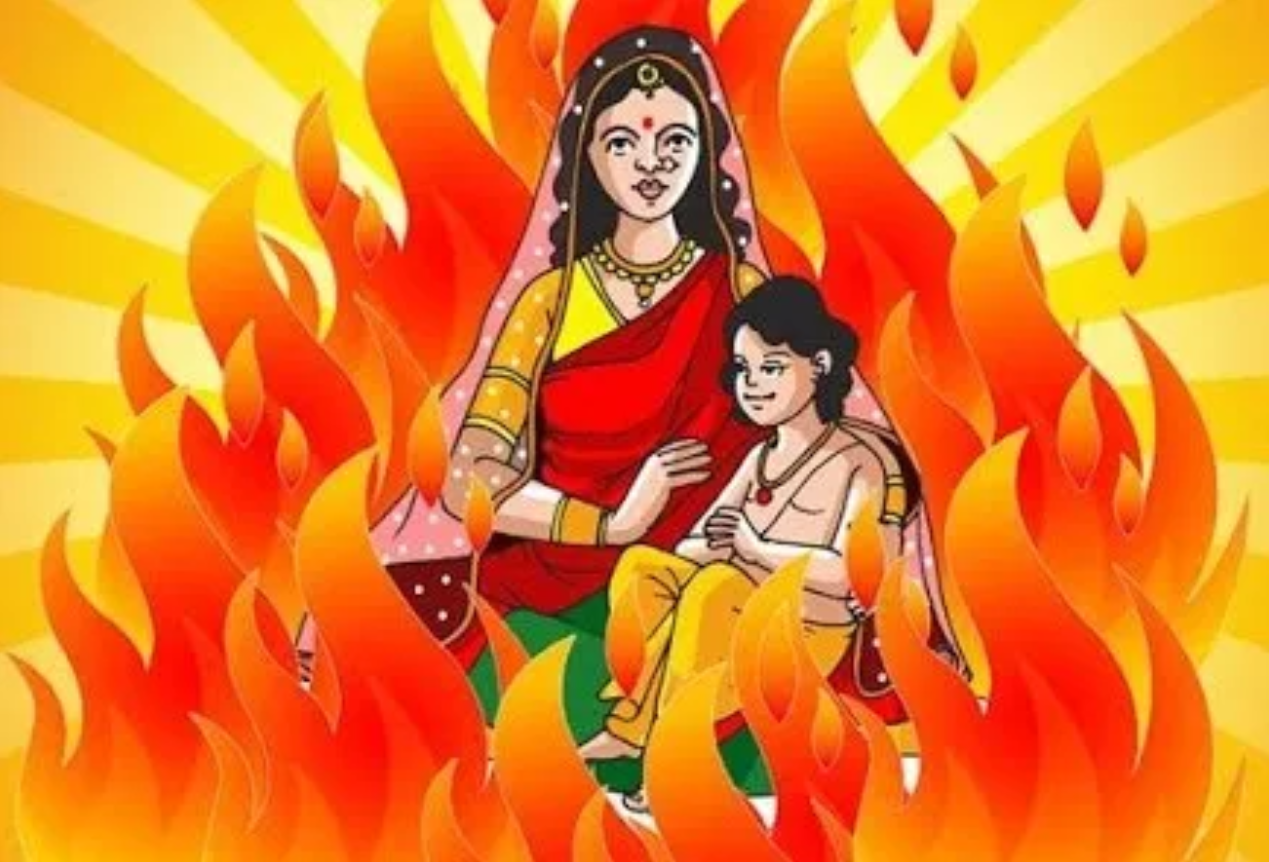Holi
Holika Dahan
Shree Sita Ram Mandir 2018
Holi is the festival of colours and is comprised of two distinct parts. The first - Holika Dahan - is the symbolic burning of Holika on Phalgun Shukla paksh, Purnima tithi, whilst the second part is the playing of colours on Chaitra Krishna paksh, Pratipada tithi.
The festival of Holi encourages the breaking of barriers between individuals and should be celebrated by everyone - the young and the old, regardless of origin.
Holika Dahan occurs after sunset on Phalgun Shukla paksh on the day of the full moon. It is essential that Holika is burnt at a predeterminted auspicious time, as failing to do so brings bad luck to the individual and community as a whole.
The bonfire for Holika is established prior to Purnima, and following regular puja vidhi the following mantra should be recited before setting Holika alight:
अहकूटा भयत्रस्तैः कृता त्वं होलि बालिशैः |
अतस्वां पूजयिष्यामि भूति-भूति प्रदायिनीम् ||
ahakoota bhayatrastaih krta tvam holi baalishaih |
atasvaan poojayishyaami bhooti-bhooti pradaayaneem ||
After the fire has cooled, and it becomes Pratipada tithi of Chaitra Krishna paksh, then the ash from the fire should be applied to the bodies of all present before commencing play with colours. When applying the ash, the following mantra should be recited:
वंदितासि सुरेन्द्रेण ब्रम्हणा शंकरेण च |
अतस्त्वं पाहि माँ देवी! भूति भूतिप्रदा भव ||
vanditaasi surendren brahmana shankaren cha |
atatsvan paahi maam devi! bhooti bhootipradaa bhava ||
Holika and Prahlad
The festival of Holi, and in particular the custom of Holika Dahan, originates from the tale of Bhakt Prahlad. Bhakt Prahlad was a pious devotee of Lord Vishnu, born to the demon king Hiranyakashyapu.
In his arrogance, Hiranyakashyapu insisted that the world worship him as the only god - punishing anyone who would worship another. His son Prahlad, however, was an ardent devotee of Lord Vishnu and would refuse to worship his father as a god. Despite the pressure faced from his father and the trials he experienced, Prahlad refused to give up his devotion to Shri Hari.
Hiranyakashyapu tried several methods to kill his son, but Prahlad was saved from every attempt on his life by the grace of Lord Vishnu. Eventually, Hiranyakashyapu turned to his sister, Holika, for a solution. Holika had previously been granted a boon that she would never be harmed by fire.
Thus Hiranyakashyapu plotted with Holika to trick Prahlad into entering a blazing fire, in the hope that Prahlad would perish and with him would perish any opposition to Hiranyakashyapu’s claims to godhood.
On the day of the plot, Holika entered a blazing fire and called Prahlad to sit in her lap. Prahlad also entered the fire, chanting the name of Shri Hari. Ultimately, by the grace of Lord Vishnu, Prahlad emerged unscathed from the burning pyre, but Holika burnt to death.
This event is remembered as an example of the triumph of good over evil. It is also remembered as an example of how Lord Vishnu endeavours to protect his faithful devotees from any harm that may befall them.
Holi is essentially a celebration of joy.
By celebrating Holi with joy and laughter, and by reciting mantras, the evil within our souls and lives are destroyed.
By completing Holika Dahan, bad omens and negativity are removed from one’s life and society.
Holi is a time for unity, friendship and gathering with the community. Devotees should forget their differences and disagreements to connect with one another - burning their negative emotions with Holika. By burning away past slights, we wipe the slate clean for the upcoming new year.

